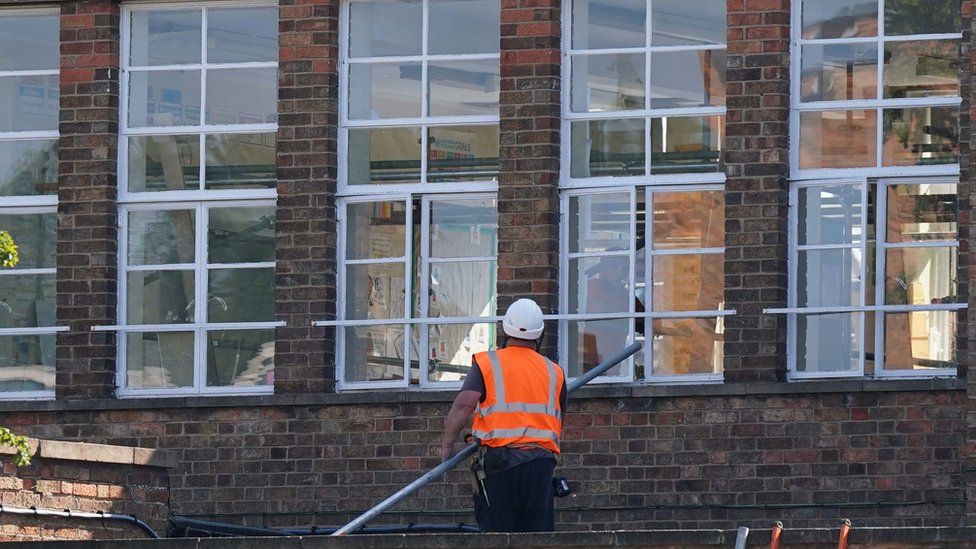
By Daniel Wainwright & Lucy Gilder
BBC Verify
At least 13 schools in England confirmed to have crumbling RAAC concrete had funding to rebuild withdrawn in 2010, BBC research has found.
They had been approved for rebuilding under a Labour scheme, which was then scrapped by the Conservative-led government after it came to power.
Schools have had to close or have closed buildings because potentially dangerous RAAC (reinforced autoclaved aerated concrete) has been found.
The analysis will raise questions about whether schools now dealing with this safety crisis could have been helped far earlier with government investment in their buildings.
The Labour scheme – Building Schools for the Future (BSF) – was a £55bn project to renew every secondary school in England, rebuilding half of them and refurbishing the rest.
It was ditched by the coalition government (which launched its own school building scheme in 2014).
The then education secretary Michael Gove said BSF was characterised by “massive overspends, tragic delays, botched construction projects and needless bureaucracy”.
There were questions about the value for money in the project, but the structural issues for the schools applying were real.
More than 700 projects were shelved. Mr Gove’s department published a list of schools affected in 2010.
This list stated which ones had had work “stopped” but did not detail what the work was. Projects that had already had their finances agreed were able to continue.
BBC Verify looked at the schools which were listed as having their building projects “stopped” and then checked these names against the list of schools affected by RAAC, published by the BBC.
Thirteen schools, which had their building work cancelled in 2010, are on the list of schools with potentially dangerous RAAC concrete.
- Aston Manor Academy – Birmingham
- Ferryhill School – County Durham
- Carmel College – Darlington
- The Ellen Wilkinson School for Girls – Ealing, London
- The Billericay School – Essex
- The Bromfords School – Essex
- The Appleton School – Essex
- The Gilberd School – Essex
- The Thomas Lord Audley School – Essex
- Thurstable School Sports College and Sixth Form Centre – Essex
- Wood Green Academy – Sandwell, West Midlands
- London Oratory School – Hammersmith and Fulham, London
- Holy Family Catholic School, Bradford
We double-checked the names of the schools as they were in the 2010 list and as they are now in the official 2023 schools census data.
Each school has a special individual registration number, which in most cases stays the same even if the name of the school changes, such as when it becomes an academy.
The Bromfords School in Essex, which missed out on BSF funding, was on a list of schools that had successfully applied for the Condition Improvement Fund (CIF) in 2022-23, some of which was to tackle RAAC.
The London Oratory School in Fulham had RAAC removed during work on its DT Block and Sixth Form common room, but it is still present in roofing panels elsewhere on the school site. The school was listed in the CIF data as needing to do “urgent RAAC deck removal”.
Most of the 13 schools identified by the BBC as having missed out on BSF funding have had some building work investment in the intervening years, according to reports in local media.
This ranges from refurbishment of a dining hall and toilets to new art and sports blocks.
We contacted eleven of the schools involved.
We shared our findings with the Department for Education (DfE) and asked them to comment.
A DfE spokesperson said: “We committed to rebuilding 500 schools over the next decade as part of the Schools Rebuilding Programme and we are on track to deliver that.
“That is on top of 520 schools already delivered since 2015 under the Priority Schools Building Programme.
“The School Rebuilding Programme is in its initial stages of delivery and there will be an increase in the number of projects beginning construction in the next year.”








